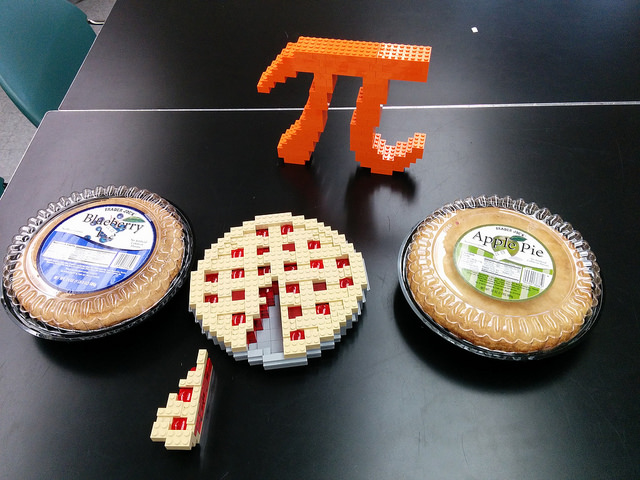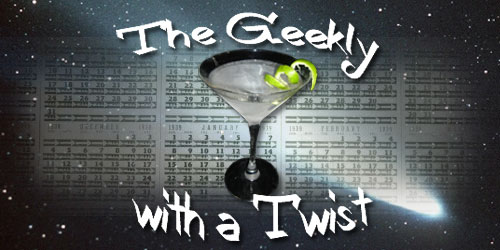Mathematics Have Never Been So Tasty: Pi Day

Pie. Who doesn’t love pie? Off the top of my head, I can’t think of a single person I know who doesn’t relish this tasty treat. It has become popular in my home, almost to the point where my kids have asked for it in place of their birthday cakes. One of these bold children even had the audacity to ask, “May I have my cake … and a pie, too?” Well, what do you do? It’s his birthday, right? Let them eat cake … and pie, too!
There are all sorts too … from pot to pizza pie, one of my favorites. I often ask my friends about their favorites, and I get the usual responses often with a mix of suggestions. My husband’s favorite is cherry, my best friend usually goes back and forth between chocolate and strawberry pie, and my children’s favorite is my favorite. I like to keep it simple with good old-fashioned American apple pie, which turns out isn’t American at all, it came from England. Ah, who cares, I’m eating it.
Now, I wish I could say we eat it often, but in actuality, we don’t. My mother’s crust recipe that I have almost perfected has just about shut down our pie intake. My husband and children won’t eat pie that I or my mother don’t make; they are simply not as good and not worth their time, they say. Spoiled much? Maybe.
Since this isn’t the 1950s (they were always making pies, right?) and I do other things, pies are reserved for special occasions. One of those days is March 14, Pi Day. March is the 3rd month of the year and 14 is the 14 because π = 3.14 and you get the picture.

One of the earliest known celebrations of Pi Day was organized by a physicist named Lewis Shaw. Shaw worked at the San Francisco Exploratorium, and in 1988 he and several of his buddies marched in a circle and then ate pie. Yup, you gotta love those physicists, they can really party. I’ve never liked physics; I know we need it, but I don’t like it. It dawned on me recently why I don’t like it. Physics relates to distance and time. I’ve never traveled any distance and been on time, but I can calculate how late I’m going to be! I’m a mathematician and who am I really kidding: if I would have been at the San Francisco Exploratorium in 1988, I would have been marching in a circle and eating pie, too. I just would have probably been late.
Pi itself goes way back. Chinese mathematicians used it as early as the first millennium accurate to seven decimal places. Approximations were used by Egyptians and Babylonians 1900 – 1600 BC, using 3.12 or 3.16 … they were close. There is even reference to pi in the Bible! (1 King 7:23). It was mathematician Archimedes who determined that pi was approximately 22/7. A guy named William Jones started using the Greek symbol π in 1706, but nobody cared until Swiss mathematician Leonard Euher started to use it in 1737, then everyone started using the symbol. I guess he just wrote it cooler. In this day and age, pi can be calculated to over one trillion digits past the decimal, but who’s got the time when 39 digits past the decimal will keep you pretty accurate in calculating the volume of Earth … if you need to know the volume of Earth, that is.
Even though a physicist started Pi Day, the mathematicians jumped on board and we love this day. On March 14, 2009, National Pi Day was born and it is often celebrated by all things circular — which includes pie! Apparently not just eating them either: there are pie throwing contests, too! I wouldn’t be caught dead throwing a pie I baked. Do you know how much work it is to get that crust just right? The horror. Maybe they are store bought? Yeah, throw those. Prospective MIT students find out if they will actually get to attend MIT on Pi Day, too: very fitting. School teachers across the nation celebrate in various ways with activities related to π and its meaning.
And what is its meaning? Well, I thought you’d never ask! Let me get my teacher mode on. Pi (π) is the ratio of the circle’s circumference to its diameter! Well, what does that mean, you ask? It means if you cut out a perfect circle and measure the distance around the circle, then you measured the distance going across that same circle right down the middle, then divided the first number by the second number you’d get 3.14! Give it a try! Didn’t get 3.14? Didn’t get anywhere close? You cut wrong, measured wrong, or divided wrong, do it again. And while you’re doing that, I shall eat pie.
To learn more about Pi Day and everything Pi, visit www.piday.org!
[Header image courtesy Bill Ward’s Flickr, shared under a Creative Commons Attribution license]
![]()




